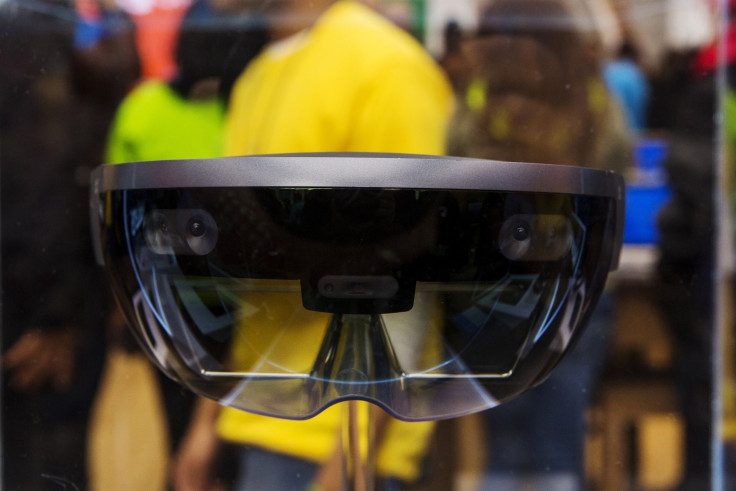Microsoft Working On Apple Smart Glasses Rival

KEY POINTS
- A new patent application shows Microsoft is working on a pair of smartglasses
- The new device will be sleeker than the company's HoloLens
- It could compete with Apple's rumored Apple Glass
Microsoft and Apple may soon go head-to-head in the smart glasses arena.
By now, everybody knows that Apple is working on a sleek augmented-reality head-mounted display (HMD) device unofficially referred to as “Apple Glass.” A recently-published patent application, however, shows that Microsoft is going to engage the Cupertino tech giant in this category with its own offering.
Per the patent application, Microsoft is working on a “microLED display system” that will be used on a sleek pair of smart glasses. The wearable will be built upon what the company learned from HoloLens but will be designed so that it can be comfortable to wear and use for everyday purposes.
Sleeker than ever
Traditional virtual-reality and augmented-reality HMDs are bulky due to the components needed for them to function. These components, according to Patently Apple, include reflective liquid crystal on silicon (LCoS) or digital light processing (DLP) projectors.
The components are capable of producing high-quality display performance, including high brightness, high contrast ratio, wider color gamut and high resolution. In order to work, however, these need several other optical components that take up a significant amount of space.
The patent application describes methods by which Microsoft will be able to create such slimmer, sleeker HMDs without compromising on display performance.
How it will do that
The patent application describes the use of MicroLEDs.
The MicroLED system will “incorporate a plurality of monochrome projectors (e.g., three MicroLED projectors) to generate three monochrome images (e.g., red, blue, and green images) that are separately input into a single waveguide of the HMD and combined to form an image that is displayed to the user.”
The single waveguide will feature input regions that can be used to combine three monochrome images into one. This will allow Microsoft to reduce the number of components needed for an HMD to display images accurately, resulting in a device that's slimmer and sleeker than current HMDs.
Meanwhile, Microsoft's dual display smartphone, Surface Duo, will arrive on Sept. 10 for $1,399. The company will then launch a dual tablet device, Surface Neo, next year.
In August, Microsoft sent the first 50 Surface Duos to tech reviewers, and images from the unboxing of the device reveal that the Surface Duo looks more like a smaller Surface Book. It also resembles a laptop when the camera is zoomed in.
© Copyright IBTimes 2025. All rights reserved.



















